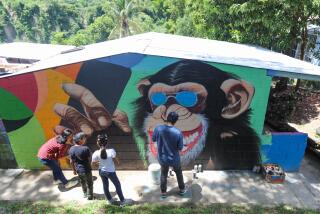A Blessed Moment of Peace in Angola
- Share via
The days-old truce appears to be holding in Angola. But if history is any guide there is no guarantee this latest deal will nurture a lasting peace in what is Africa’s longest civil war ever.
The Clinton Administration has encouraged democracy in the southwestern African nation by recognizing President Jose Eduardo dos Santos, who was elected freely and fairly. That diplomatic step was a breakthrough departure from the policy of the Reagan and Bush administrations, which refused to recognize Dos Santos because of his early flirtation with Marxism and his prior support from the Soviet Union and Cuba.
Rebel leader Jonas Savimbi, the man who would be president, is likely to settle for nothing less than a high degree of power. A runoff election between Savimbi, who polled 40% in the last election, and Dos Santos, who won 49%, is scheduled for 1996--if this cease-fire holds that long. That ought to satisfy Savimbi, who has charged the elections were marred by fraud, although the United Nations declared the voting honest.
The truce--the third attempt at peace in five years--also guarantees Savimbi’s UNITA rebel movement a place in government. The deal promises Savimbi and his supporters several government jobs immediately, possibly including the vice presidency for him. That has to be an improvement over the past winner-take-all arrangements that excluded the Savimbi camp from the top ranks of government. Yet Savimbi didn’t personally sign the truce. Citing fears for his personal safety, he sent an emissary to the ceremony in Lusaka, Zambia, and requested 150 bodyguards. A bad sign.
Although Savimbi has proven that he cannot be trusted, this time he may have had good reason to believe his life was in danger. After talks were concluded successfully, the Angolan army continued to attack UNITA’s positions. That’s no way to encourage trust or peace.
Civil war has raged in Angola since 1975 and independence from Portugal. At least 500,000 Angolans have died in the fighting, which has devastated much of the country. Like Somalia, Angola remains full of weapons and pocked with land mines, a legacy of misguided Cold War largess. The conflict pitted the might of the United States and men of southern Africa who backed Savimbi against the might of the Soviet Union and men of Cuba who back Dos Santos. The outside “help” escalated an internecine and ideological conflict into a full-blown war that continued after the superpowers lost interest.
There is hope, however, in the region. South Africa is a model of reconciliation. Namibia shines with its strong constitution and stable government. Angola should take a lesson from those nations.
More to Read
Sign up for Essential California
The most important California stories and recommendations in your inbox every morning.
You may occasionally receive promotional content from the Los Angeles Times.













